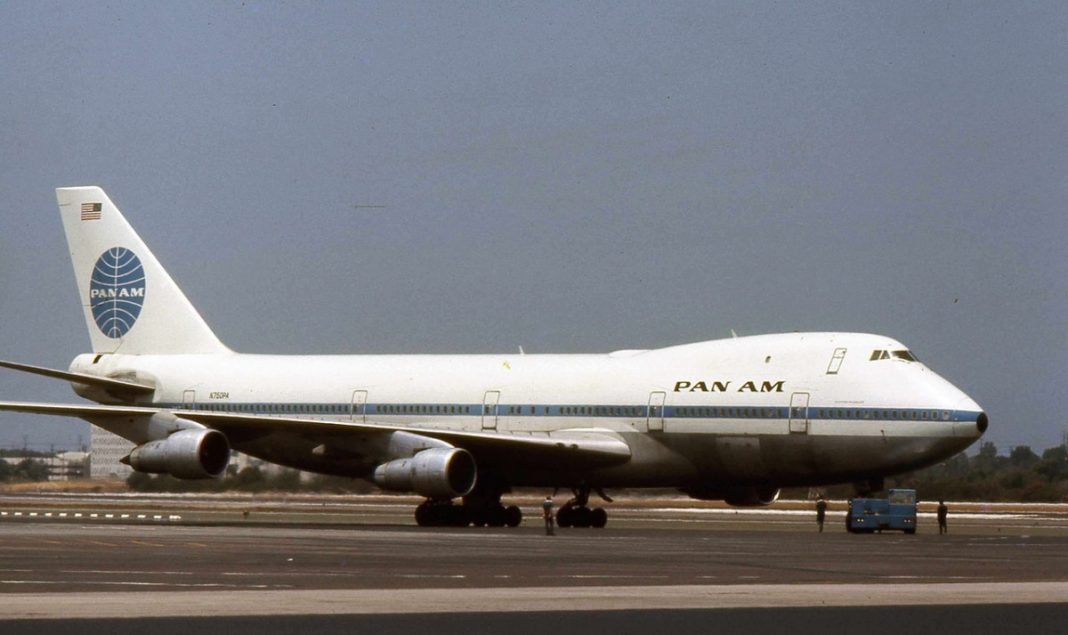The Boeing 747 is one of the most recognizable and loved aircraft in the world. At the time of its launch, it changed the economics and possibilities of aviation in many ways. In this article, we take a look back at the introduction of the 747, and how a combination of airline needs and previous plans from Boeing led to its development.

The Boeing 747
The Boeing 747 has been one of the most popular aircraft ever introduced, both with airlines and with passengers. It made its first scheduled flight with Pan American World Airways in 1970 and has remained in service, and in production, ever since.
There have been several variants since the original 747-100. The 747-200 improved on engine issues with the first version, the 747-300 stretched the upper deck, and the 747-400 improved again the engines and range (amongst other things) and became the most sold version. For more on the story of the 747, take a look at our article on how it changed the world.
Stay informed: Sign up for our daily aviation news digest.

The need for the 747
So where did the original motivation for the 747 come from? The 747 came about following the success of the earlier Boeing 707, and the desire of one airline, in particular, to build on this. The 707 was launched in 1958, and whilst not the first jet aircraft to be made, it was the first to reach widespread use, often credited as marking the start of the jet age.
Pan American World Airways (Pan Am) was the launch customer for the Boeing 707, and one of the largest operators (flying 127 707s up to retirement in 1981). It was a great success for the airline, allowing it to operate transatlantic services with profitable loads, and to operate round the world flights with the same aircraft. These flew daily with different stops and routes, westbound from San Francisco to New York (they had operated before the 707 but required changes between DC3 and Constealltion aircraft en route).

The success of the 707 led to Pan Am requesting a larger aircraft from Boeing. The airline believed that the way forward lay in an aircraft with 2.5 times the passenger capacity, allowing them to operate longer flights and, critically, reduce the price per seat. In 1966, the airline placed an order for 25 of these aircraft for $525 million, and the 747-100 was born.

The unique 747 shape, designed for freight
Before the interest in a passenger aircraft, Boeing had already worked on the design for a new, high capacity, freight aircraft for military use. It lost this contract to Lockheed with the C5A Galaxy. These plans were then there to be amended when the need arose for a similarly large passenger aircraft.
A key part of the design was the inclusion of a second deck. This not only expanded passenger capacity, but it also allowed the full use of the main deck for freight and the addition of a lifting nose for loading.

Boeing saw this as an important feature, partly as a major alternate focus at the time was on supersonic aircraft. Boeing was also working on a supersonic aircraft, the Boeing 2707, to compete with the British / French designed Concorde. If passenger aircraft demand moved in this direction, the 747 could still find a place as a heavy freighter.
The original design was to have a full-length second desk, but this was not feasible due to safety requirements at the time. For passenger operation, it gave problems with evacuation routes and times. The solution of course was to shorten the upper deck, leaving its iconic ‘hump’ and upper deck seating area.

New, more powerful engines
The final hurdle to get the new, larger aircraft flying was to develop sufficiently powerful engines. Boeing worked with Pratt & Whitney to develop a new high by-bypass turbofan engine (General Electric was also working on this, but committed to delivery for the C5A Galaxy).
This was more powerful, but also quieter and more fuel-efficient than existing low-bypass or turbojet engines (the main difference being high-bypass engines produce more fan thrust relative to their jet thrust).
Heading towards retirement, but still going strong
Whilst the current 747-400 passenger aircraft are now in the later stages of retirement, production of the new 747-8 continues. This shares the same airframe design and is offered as both a passenger and a freighter version.

Many airlines continue as well to fly older 747s as part of their cargo fleets. This was, of course, one of the original motivations for the introduction of the aircraft over 50 years ago. And as one of the most popular still in freighter fleets (along with the 777 freighters), it would seem Boeing certainly got this right!
There is even the possibility that following the slowdown in passenger aviation seen in 2020, combined / Combi aircraft such as the 747 could make a comeback.
[ad_2]
Source link


